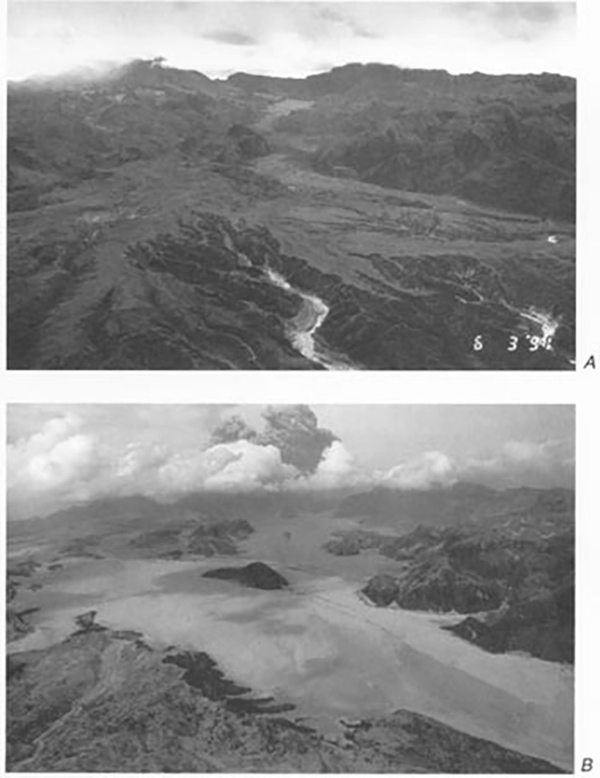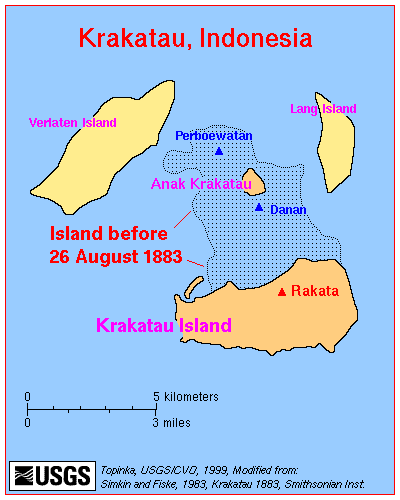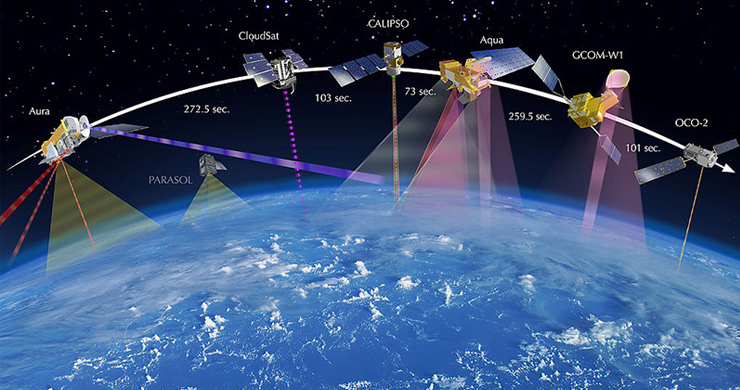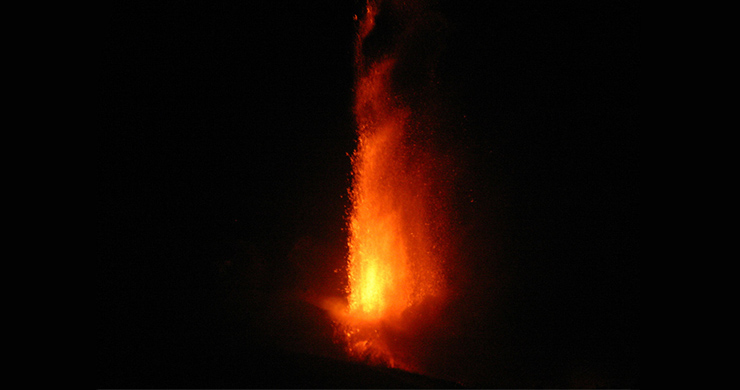Different Types Of Volcanoes
When we talk about volcanoes there are some key terms we need to know:
- Active Volcanoes – have erupted or shows sign within recorded history (past 2,000 years or so).
- Extinct Volcanoes – if a volcano no longer has a magma supply scientists believe that it will not erupt again and is termed extinct.
- Dormant Volcanoes – volcanoes that have not erupted with recorded history but do still have a magma supply so could erupt again are usually termed dormant.
Sometimes a volcano believed to be extinct suddenly comes back to life such as the Soufrière Hills Volcano which suddenly became active again in 1995.
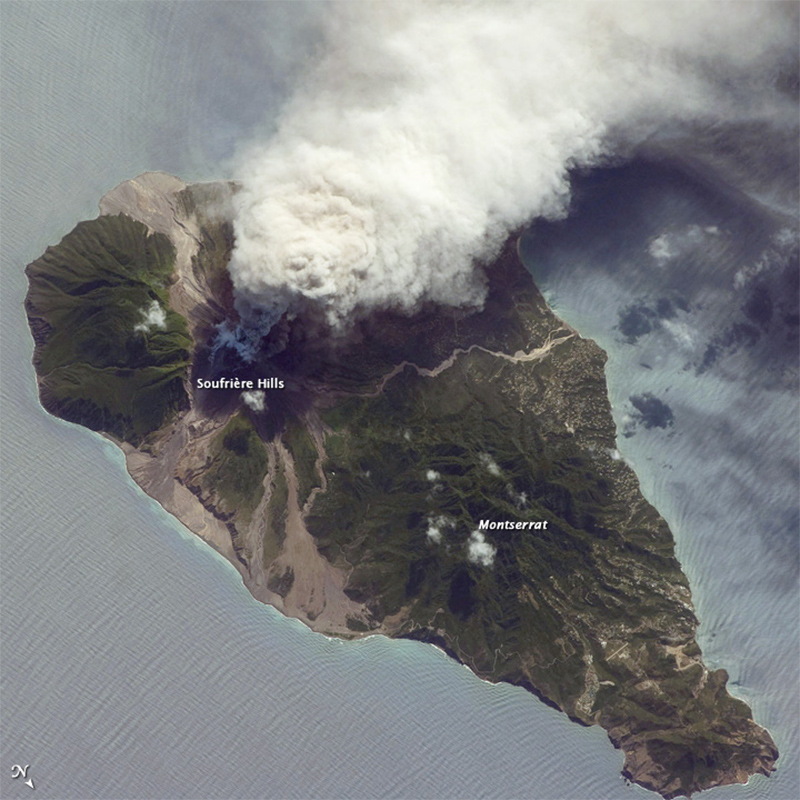
Image: Soufrière 2009 eruption - NASA International Space Station, Expedition 21 crew / NASA © Public Domain
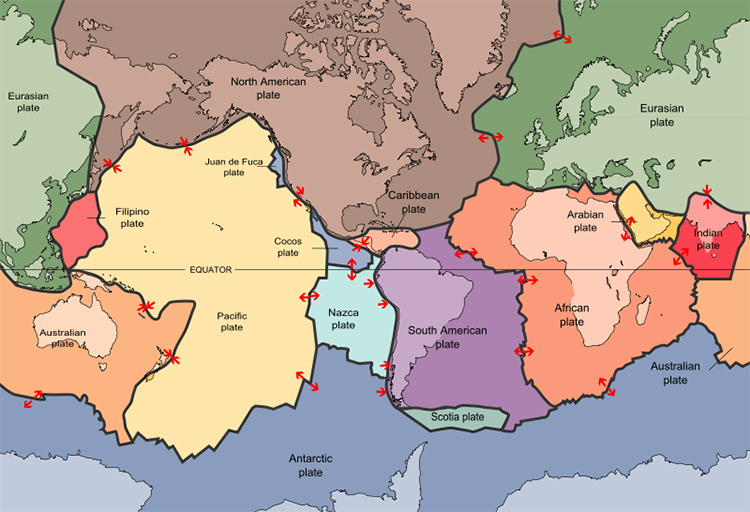
Image: Plates tect2 en - USGS © Public Domain
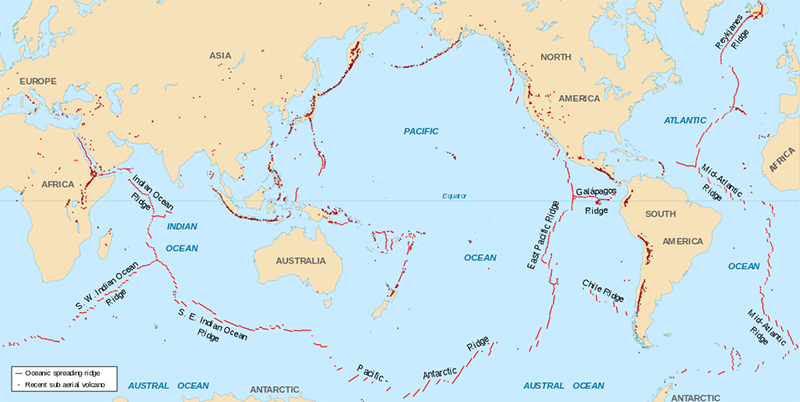
Image: Spreading ridges volcanoes map-en - Eric Gaba (Sting) © Public Domain
Look at the map to see how many active volcanoes are around the Pacific Ocean.
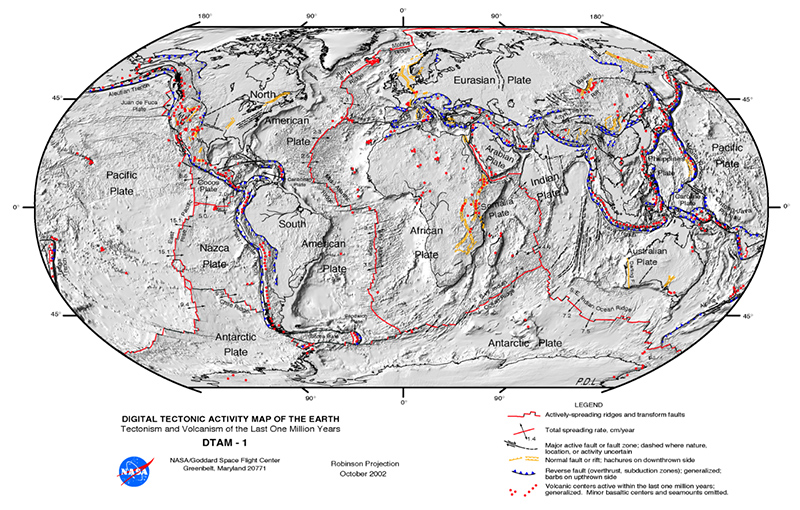
Image: Plate tectonics map - Michael Metzger / NASA © Public Domain
Many of the world’s most active and dangerous volcanoes are at the subduction zones that mostly line the edges of the pacific plate.
The edge around the pacific plate is sometimes called the ‘Ring of Fire’.
Many of the most dangerous areas for Volcanoes in the world are along the ring of fire and in particular the region of Indonesia.
Ring of Fire
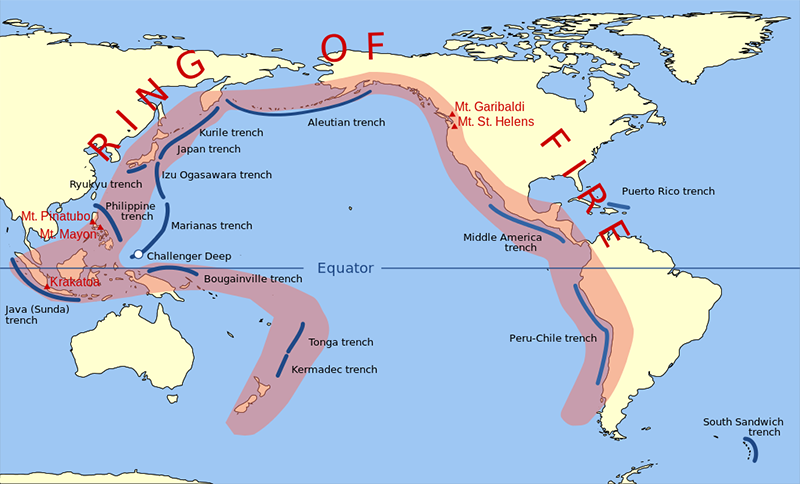
Image: Pacific Ring of Fire - Gringer © Public Domain
Indonesia
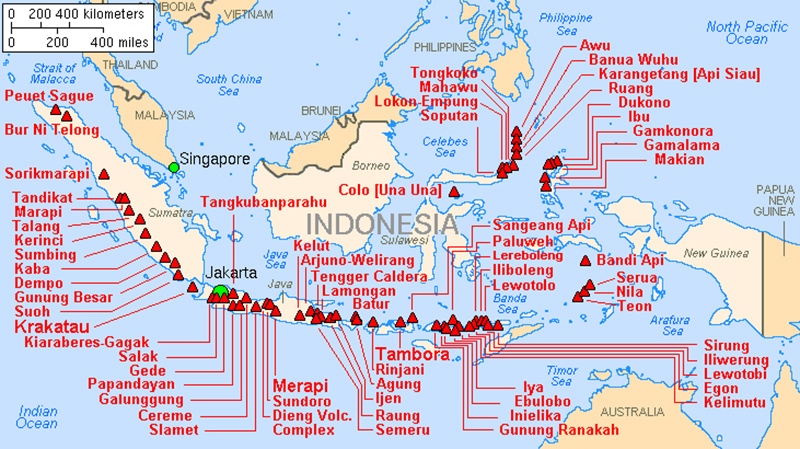
Image: Map indonesia volcanoes - Lyn Topinka / USGS © Public Domain
On the map above:
- Find the famous volcano Krakatau (Krakatoa).
- How many active volcanoes are there?
Mount Rinjani 1994 Lombok Indonesia
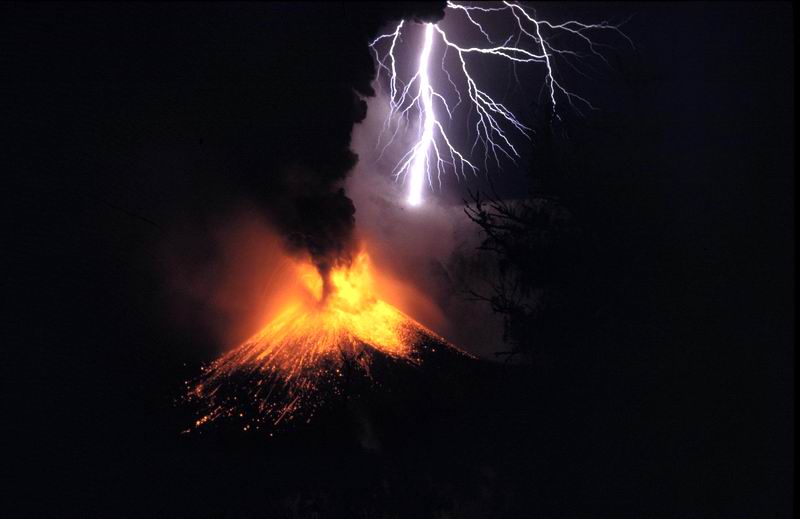
Image: Rinjani 1994 - Oliver Spalt © Wikimedia Commons under Creative Commons Attribution-Share Alike 3.0 Unported
Volcanic Hazards
Blast is caused by an causing an explosion.
- Usually this is vertical and does not cause much damage.
- Sometimes the blast is lateral (sideways) and this can flatten forests or anything else in its path. This happened in the eruption of Mt St Helens USA in 1980.
Before
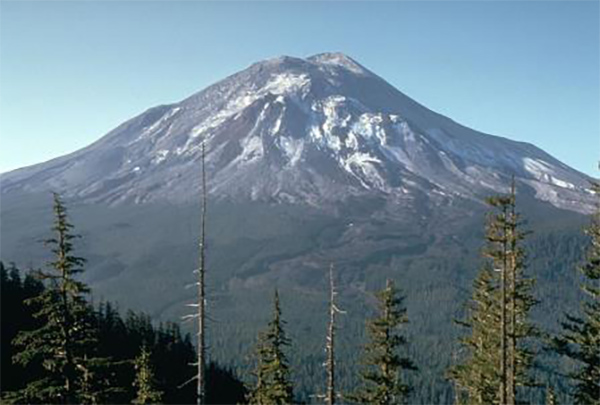
After

Image: Mount St Helens Summit Pano II - Gregg M. Erickson © Wikimedia Commons under Creative Commons Attribution-Share Alike 3.0 Unported
Ash Cloud when a blast is vertical it blows rock and lava pieces fragments into the air as a cloud. Winds can carry this ash a long way before it falls burying buildings or being breathed in.
Volcanic Bombs are the larger rocks blown upwards by the blast these land closer to the volcano.
Pyroclastic surges happen when the upwards thrust of the blast can no longer support the hot gas, ash and rocks above within the column.
The column collapses downwards and then flows down the sides of the volcano as a superheated (typically above 400˚c) cloud of gas and ash.
City of St Pierre destroyed by a pyroclastic flow in 1902. There was only 1 recorded survivor who was a prisoner in a dungeon.
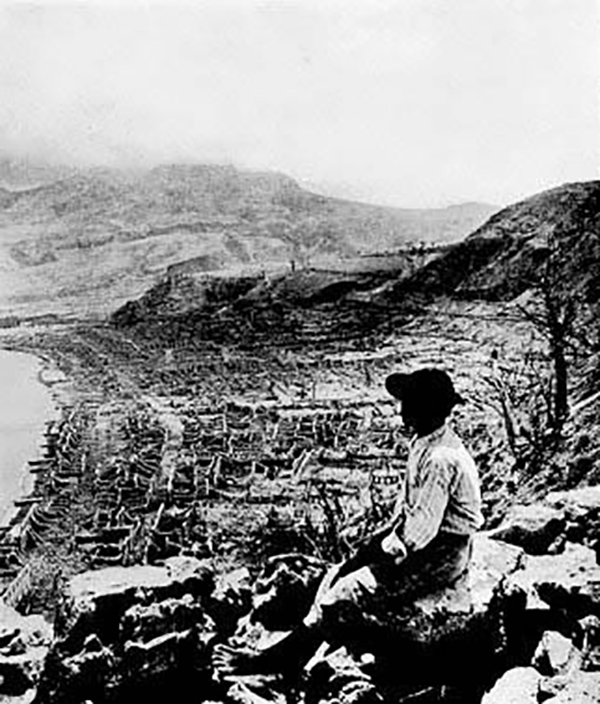
Image: Pelee 1902 3 - RGM~commonswiki © Public Domain {{PD-US}}
Lahars happen when ash mixes with water to make rivers of thick mud and rocks which can l set hard like concrete.
Lahar before and after – Mt Pinatubo
Image: River valley filled in by pyroclastic flows, Mt. Pinatubo - Magalhães © Public Domain
A flank collapse is where the side of a volcano breaks off like a giant landslide. This happened in the 1980 eruption of Mt St Helens which is why the blast was lateral (sideways) instead of vertical (straight up).
If a flank collapse happens on a volcanic island then the resultant landslide can cause a giant wave or tsunami.
The collapse of the volcano Krakatau (Krakatoa) in Indonesia in 1883 killed 36,000 people (some experts believed it could have been as many as 120,000) mostly by the huge tsunami’s caused as the volcano collapsed.
Lava flows are not really too dangerous to people because viscous lava moves slowly. Fluid lava can move more quickly but mainly in known channels like a river. Lava is more of a danger to property not to people.
Fluid Lava fountain Kiauea
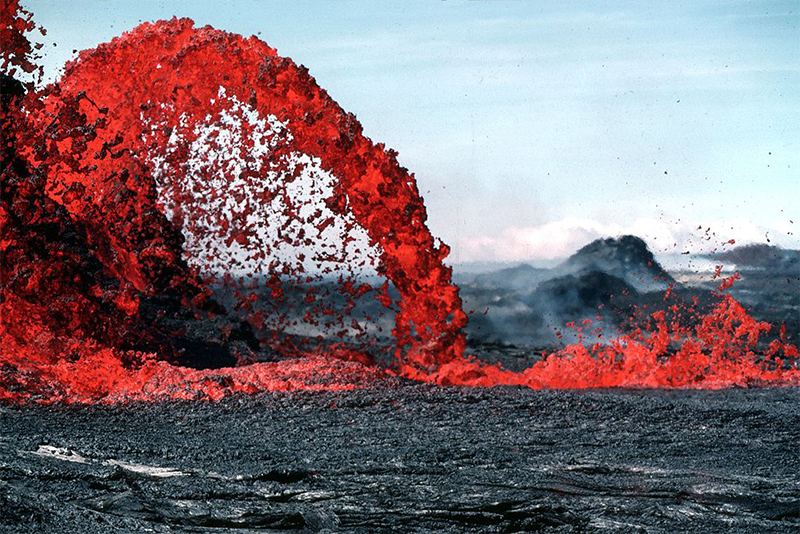
Image: Pahoeoe fountain original - Jim D. Griggs, HVO (USGS) staff photographer / USGS © Public Domain
Climate Change can occur as gas such as gas from the volcano and ash can stop heat from the sun reaching the ground. After the Krakatau eruption in 1883 global temperatures took five years to return back to normal and in 1884 there were serious food shortages nearly everywhere.
Pupil Activity
As a group research and write a script to give a presentation on one of the slideshows of a famous volcano/eruption below.
Krakatau
Image: Map krakatau - USGS © Public Domain
- Krakatau is one of the most famous volcanic eruptions in history.
- It is currently refilling with magma and if it erupted today more than 20 million people could be killed.
- It is not a question of if it erupts but WHEN it erupts.
Mount Vesuvius
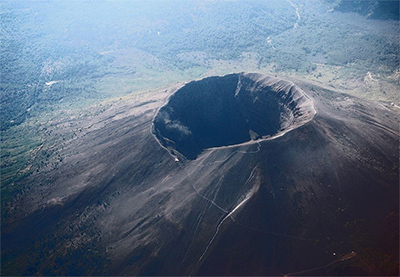
Image: Vesuvius from plane - Pastorius © Wikimedia Commons under Creative Commons Attribution-Share Alike 3.0 Unported
- Already in 2016 the subduction zone beneath Italy has caused 4 earthquakes.
- As well as earthquakes it creates volcanoes the most famous and dangerous is Vesuvius.
- If it erupted again today more than three million people could be killed.
- It is not a question of if it erupts but WHEN it erupts.
